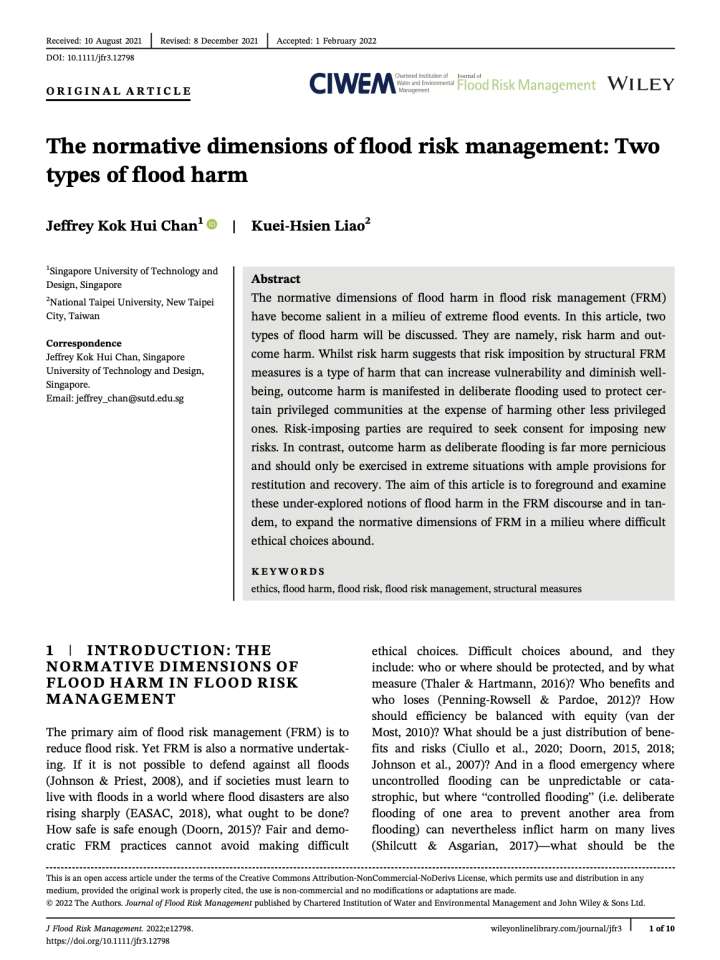The normative dimensions of flood risk management: Two types of flood harm
The normative dimensions of flood harm in flood risk management (FRM) have become salient in a milieu of extreme flood events. In this article, two types of flood harm will be discussed. They are namely, risk harm and outcome harm. Whilst risk harm suggests that risk imposition by structural FRM measures is a type of harm that can increase vulnerability and diminish well-being, outcome harm is manifested in deliberate flooding used to protect certain privileged communities at the expense of harming other less privileged ones.
Risk-imposing parties are required to seek consent for imposing new risks. In contrast, outcome harm as deliberate flooding is far more pernicious and should only be exercised in extreme situations with ample provisions for restitution and recovery. The aim of this article is to foreground and examine these under-explored notions of flood harm in the FRM discourse and in tandem, to expand the normative dimensions of FRM in a milieu where difficult ethical choices abound.
Explore further

